- November 14, 2025
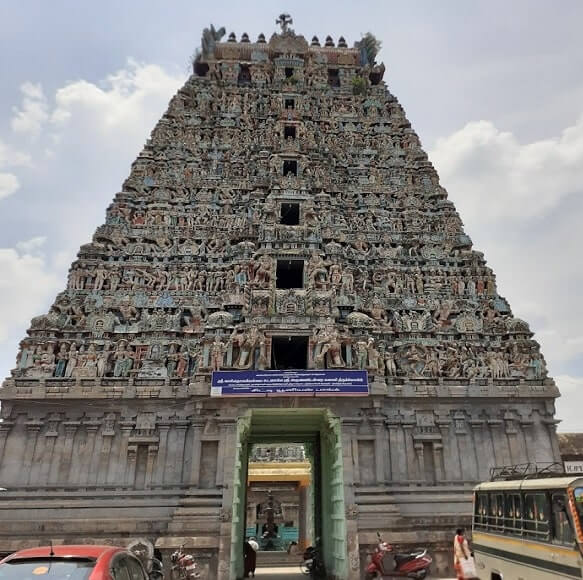
| Sivasthalam | Thiruppanandal Arunajadeswarar [Senjadaiyappar] Temple |
|---|---|
| Presiding Deity | Arunajadeswarar, Senjadaiyappar, Thalaivaneswarar, Jadadharar |
| Consort | Bruhannayaki, Periya Nayaki, Thalaivaneswari |
| Theerthams | Brahma Theertham, Airavatha Theertham, Thadagai Theertham, and many others |
| Sthala Vruksham | Palmyra Tree |
| Agamam | Kamiya Agamam |
| Ancient Name | Thadagaiyeeswaram |
| Location | Thiruppanandal |
| District | Thanjavur |
The story of Thiruppanandal Temple is as enchanting as it is ancient, centered around the profound devotion of a princess named Thadagai. Seeking the blessing of a child, Thadagai was guided by Lord Brahma to worship at Thalaivanam (Thiruppanandal). With unwavering faith, she meticulously performed her prayers.
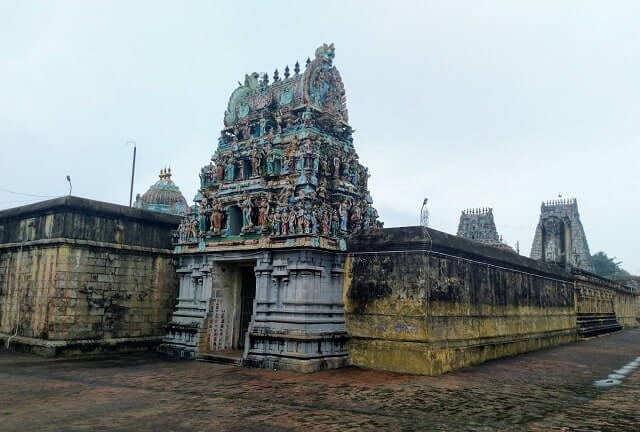
One day, as she was about to garland the deity, a miraculous event unfolded. To test her devotion, Lord Shiva caused her garment to loosen. With her hands clutching her clothes, Thadagai, in a heart-wrenching plea, implored the Lord to accept her garland. Moved by her pure love, Lord Shiva bowed His head to receive the garland! Immediately, Thadagai was blessed with sixteen arms, and overcome with joy, she praised the Lord, who then appeared before her mounted on His sacred bull, Nandi.
Thadagai humbly requested not only a child but also that the temple be known by her name as a testament to this divine grace. Lord Shiva granted her wish, and the temple came to be known as Thadagaiyeeswaram. Thadagai, in her gratitude, established a tank north of the temple, installing Veeri Amman on its southern bank and Vairavar on its eastern bank as guardians, and soon after, she was blessed with a child.
Centuries later, King Veerasena, a great devotee of Lord Shiva, heard of the Lord’s bowed head. He desired to restore the deity to an upright position. Despite his valiant efforts, using elephants and horses to pull the idol, the statue remained unyielding. Deeply troubled, the king sank into despair.
News of this reached Kungiliyakalaiya Nayanar of Thirukkadavur, a revered saint. He arrived at Thiruppanandal and, with immense faith, asked the king to unchain the elephants. He then tied a thin rope around Lord Shiva’s neck and a noose around his own. As he pulled, the noose tightened around his neck, cutting into him. Seeing his profound devotion, Lord Shiva reached out, placed His hand on the saint’s head, healing his wound, and miraculously, the Lord’s head straightened! The king, witnessing this act of divine intervention, realized that it was not brute force but the pure thread of devotion that could move the Lord.
A local legend whispers that the Chola king, saddened that the idol did not straighten for his efforts but for Kungiliyakalaiya Nayanar’s devotion, chose not to worship Senjadaiyappar anymore. Instead, he built another grand Shiva temple to the west of Thiruppanandal. However, it’s said that this temple was later destroyed by a dust storm.
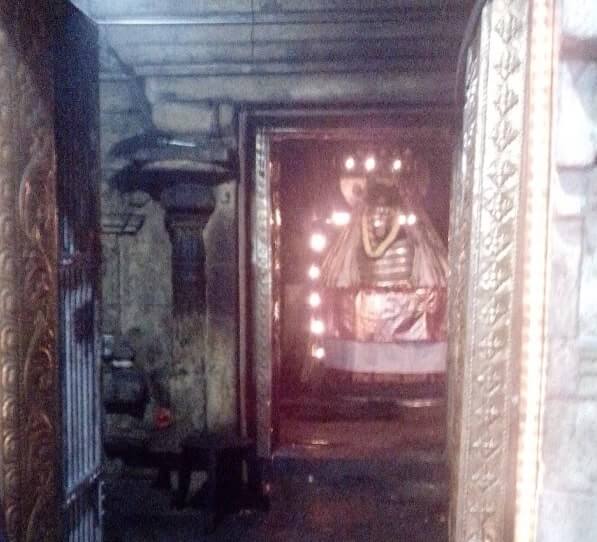
Nestled in the heart of the village, the Thiruppanandal temple is an architectural marvel. Inscriptions reveal its vast expanse. The magnificent west-facing Rajagopuram (main tower), adorned with intricate sculptures and paintings, soars seven stories high, a truly awe-inspiring sight. Inside, the sixteen-pillared mandapam next to the Rajagopuram, the vehicle mandapam to the north, and the Velval Netri Mandapam next to the second gopuram are all testaments to exquisite sculptural and artistic brilliance. The temple also features a gopuram on its upper side. Both the inner and outer courtyards surrounding the main shrine are meticulously designed, adding to the temple’s grandeur.
Thiruppanandal holds unique spiritual significance:
Thevaram Hymn by Thirugnanasambandar:
Viritthavan Naanmaraiyai Mikka Vinnavar Vanthirainja
Eritthavan Muppurangal Liyaleymula Killuyirum
Piritthavan Senjadai Mel Nirai Peroli Vellanthannai
Tharitthavanaar Pananthaal Thiruththaadagani Yichcharame.
Meaning: “He who spread the four Vedas, whom the celestials came and worshipped; He who burnt the three cities, and separated all living beings in the world; He whose red matted hair holds the great flood of light – His abode is Pananthal, the sacred Thadagaiyeeswaram.”
The temple boasts numerous sacred tanks, both within and outside its premises, including Brahma Theertham, Airavatha Theertham, Thadagai Theertham, Vishnu Theertham, Surya Theertham, Chandra Theertham, Adisesha Theertham, Harithuvaja Theertham, Naga Kanni Theertham, Dharumasena Theertham, Koopa Theertham, and Manniyaru.
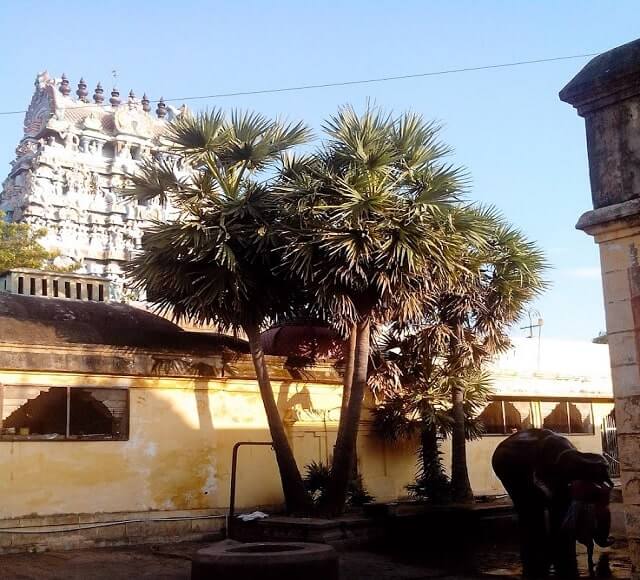
Inscriptions on the temple’s base walls reveal that Thiruppanandal Nakkan Dharani built this temple using black granite. It is also believed that the Chola King Rajaraja II further developed this sacred shrine. Ancient inscriptions refer to the presiding deity as Thiruthadagaiyeeswarathu Mahadevar, Thiruthadageswarathu Peruman, and Thiruthadageschuramudaiya Nayanaar. An inscription from the time of Kulothunga Chola I indicates that the Goddess was known as Periya Naachiyar. The inscription at the southern entrance of the temple’s Maha Mandapam states that Anbarkkarasu Maruthamanikkam, also known as Villavarasan of Venkoor, built the Goddess’s shrine.
Many revered beings have worshipped here and received blessings, including Lord Brahma, Lord Vishnu, Indra, Airavatham, Agasthiyar, Chandra, Surya, Adisesha, Naga Kanni, Dharmasenan, Yagnaguptan, Thadagai, Kungiliyakalaiya Nayanar, Sangukannan, and Nagunnan.
To the southwest of the main temple lies the Oorudaiyappar Temple. There are also smaller shrines dedicated to deities like Aiyanar and Mariamman. The Oorudaiyappar Temple is believed to have been worshipped by Lord Brahma. It is also where Airavatham, after being freed from a curse, worshipped. This led Brahma to meditate on Lord Vishnu, who then granted him the power to build the Maadaga Temple with a lion’s face. This legend is further supported by the presence of a Vishnu temple to its west.
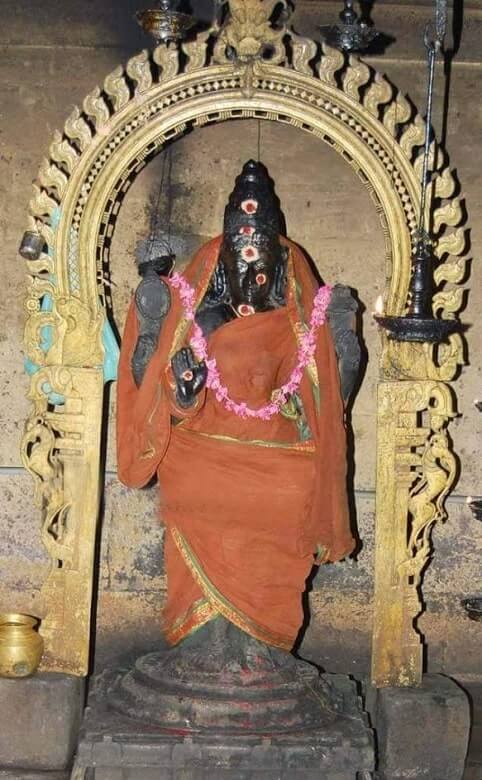
Thiruppanandal is particularly significant for those seeking relief from Sarpa Dosham (serpent affliction), Naga Dosham (snake affliction), and Sevvai Dosham (Mars affliction). It’s especially known as a powerful site for dosha nivarthi (alleviation of afflictions) for women.
Devotees fulfill their vows by offering clothes to the Lord and Goddess and by contributing to the temple’s renovation and maintenance.
The temple comes alive with vibrant festivals throughout the year:
The Thiruppanandal Arulmigu Arunajadeswarar Temple welcomes devotees during the following hours:
Thiruvandal – 05:30 AM
Kala Santhi – 09:30 AM
Uchikaalam – 12:00 PM
Sayaratchai – 05:30 PM
Irandam Kaalam – 07:30 PM
Ardha Jaamam – 09:00 PM
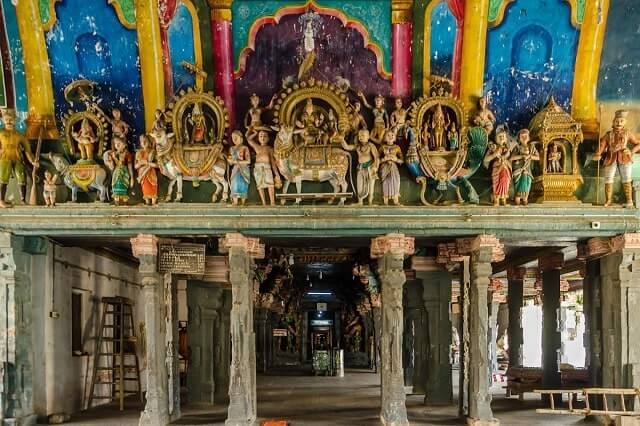
For inquiries, you can reach the temple at: +91-435256422, +91-4352456047, 9443116322, 9965852734
Arulmigu Arunajadeswarar Temple,
Thiruppanandal, Thanjavur District – 612 504
Whether you’re drawn by its rich history, architectural beauty, or the promise of divine blessings, the Thiruppanandal Arunajadeswarar Temple offers a profound spiritual experience. Have you been inspired to visit this ancient abode of Lord Shiva?